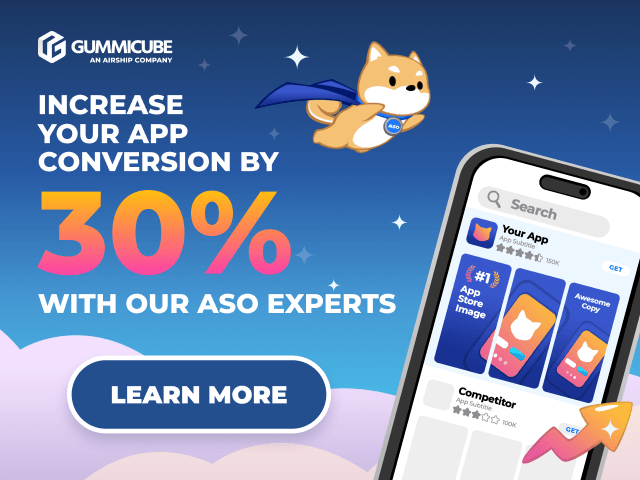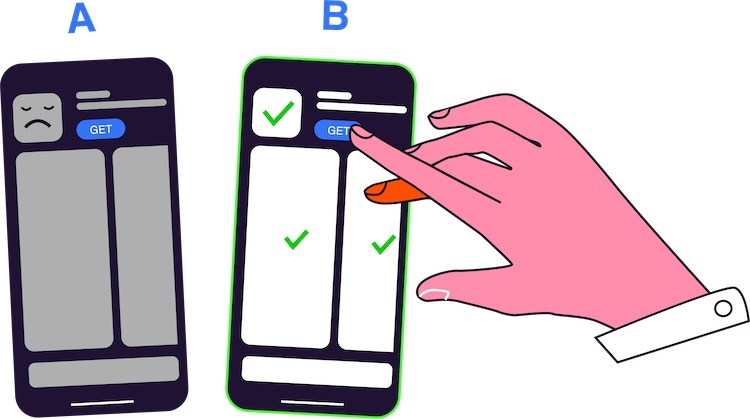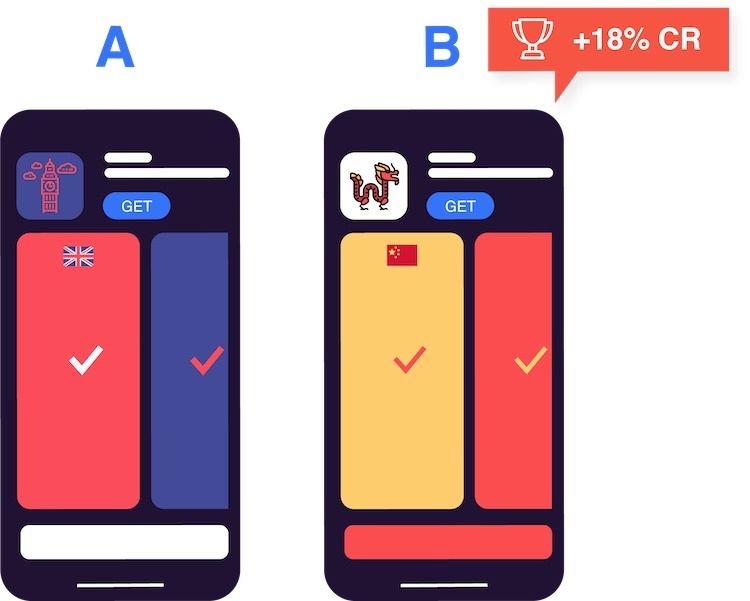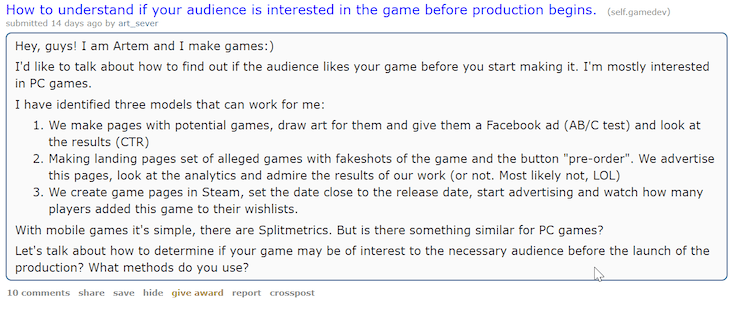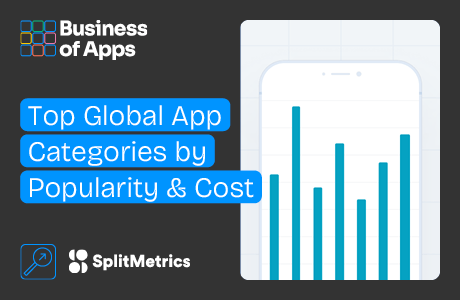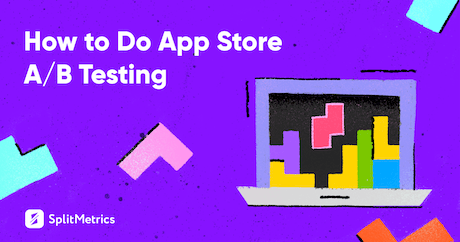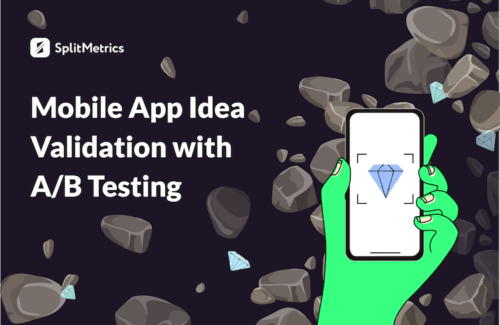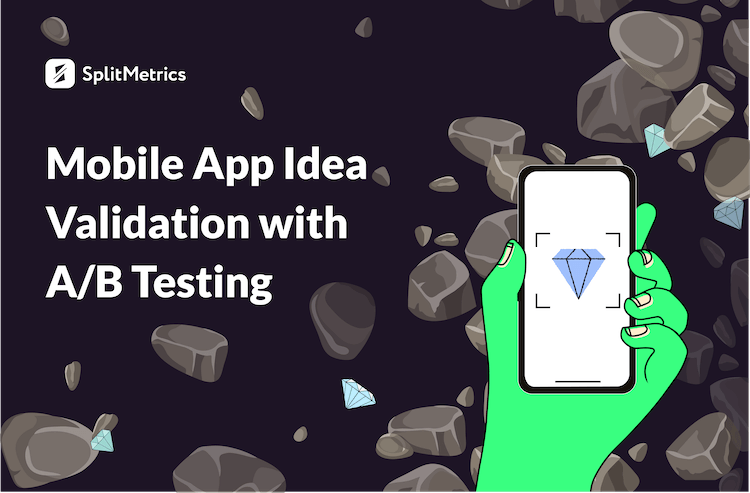
One thing that’s common for both small startups and mega corporations is that time is money, and effective use of time means millions of dollars in the long run. That’s why mobile publishers need to test their mobile app ideas quickly and at minimal cost. In this post, we will tell you how.
To start with, did you know that quite a high percentage of new products and services fail? Some researchers found that the failure rate is around 40%, while others, like Harvard Business School Professor Clayton Christensen, claim it is closer to a staggering 90%. One of the most common reasons why mobile apps fail is poor market & target audience research.
So, how to make sure users will like your mobile app and download it when it’s live? To test the interest of your potential customers even before starting to build anything, make a pretotype of your mobile app and show it to them. This is not a typo, I’m talking about a pretotype.
Pretotyping: New Term in Idea Validation
So what does pretotyping mean?
Pretotyping is a way to test your idea with minimal time and money by creating a virtual and extremely simple version emulating your potential product.
As Alberto Savoia, the author of Pretotype it, said, pretotyping is “the art and science of faking it before making it”.
How does pretotyping differ from prototyping? Pretotypes are much simpler and take much less time than prototypes. Prototype is basically the very first version of your product with stripped-down functionality. So it makes sense that building such a model of your future product takes much time and effort, whereas pretotype is just an image that conveys the idea of your product. All you have to do is pretend that you already have a prototype and show it’s description – pretotype – to the target audience. Creating a pretotype takes hours instead of days, months or even years.
We have heard so many stories about well thought out products with polished prototypes that companies had been developing for months only to find out that customers didn’t like the product. What should you do if you’re planning to launch a brand-new mobile app and don’t want to waste time on a prototype of a product that nobody will use?
The truth is that you can easily create a pretotype of a mobile app you’re thinking about, show it to users and figure out whether they like it. How? A/B testing is the answer.
A/B Testing of Mobile App’s Pretotypes
Find out how real users respond to various concepts of your future mobile app through app store A/B testing platforms like SplitMetrics. Such platforms enable you to test pretotypes of your app on the emulated product and search pages of the App Store and Google Play.
Here is what you should do:
- Analyze market trends, check if there are already some similar apps in the market. If so, check out whether they are in demand and what features they have.
- Decide how your app should look like. What kind of design it will have, what icon will best capture its essence, etc.
- Now we’re getting to it. Design a few versions of app store product page elements that would reflect the vision of your app, namely, icon and screenshots.
- Think of an appropriate title and subtitle for the App Store, and title, short & full description for Google Play.
Once you have developed several options of the app’s title, description and visuals – congrats, you’re done with your mobile app pretotypes.
That’s it. Now you need to show them to potential users, learn whether they like it or not and what concepts win their attention.
A third-party A/B testing platform will make this work for you. It will show variations of your app’s product page on the App Store or Google Play to potential users as if it already exists. In fact, they will see a pretotype of your mobile app: it’s title, icon and screenshots – just the way they see all real apps on search and product pages, and their response will help you understand whether you should build this app or it’s better to try another idea.
App store A/B testing platform will analyze how your potential customers reacted to your app, how many of them tried to download it and which of the concepts better resonated with your target audience.
A/B Testing Capabilities for Mobile App Idea Validation
Here is what you can do with the help of A/B testing before your mobile app development and launch.
- Test your mobile app idea and decide if you should build it
By showing your mobile app’s pretotype to your target audience you will find out whether it has a good chance of success. Run A/B tests and then check how many users clicked the Get button. If the conversion rate is too low, this is definitely a red flag.
- Compare a few mobile app concepts and select the best one
A/B testing will enable you to make the right decision in case if you are choosing between several concepts.
Should you develop a game or an app for music education? Should you focus your efforts on an app for health monitoring – or rather for mental health, meditation and relaxation?
Run multivariate A/B tests with different titles, screenshots, icons and descriptions to compare concepts & ideas, and select the one you should put into practice.
- Decide on targeting and positioning
You’ve made up your mind about the concept. But what markets should you target? What about positioning? Resort to A/B testing to make it clear.
Running A/B tests will help you understand whether your app should be designed for men, women or both. Should it be an educational app for kids or adults?
Comparing the performance of variations with screenshots in English and, for example, Chinese, will provide you with the basis for the informed decision on whether you should localize the app for various markets.
Test if it makes sense to localize your app for the Chinese market
- Mobile app feature validation: prioritize app features
Showcase some of your app’s future features on screenshots to watch users’ reaction and figure out what features of your future mobile app you should put first.
Run A/B tests and decide whether you should add face filters to your photo editing app or that’s not what potential users are interested in. Does it make sense to add an option to choose a car for your racing mobile game or not? A/B tests will shed light on it.
- Test your game setting
In case you are going to build a mobile game, it’s important to explore genres and settings preferred by your target audience. You might be wondering what game setting will work best: the wizarding world of Harry Potter or naval battles and pirates; late 19th–early 20th century England with Sherlock Holmes or space science fiction? Running multivariate A/B tests will bode well for your future app. Compare variations with screenshots designed for specific genres and settings you’ve previous selected, and increase your chances of success.
Are There Any Companies Already Doing This?
Sure. A number of top publishers today take advantage of A/B testing tools for mobile app idea validation. A/B testing of pretotypes is also widely used for mobile game idea validation.
Recent post on Reddit
World-famous companies like Rovio, Wargaming, MSQRD and others in one way or another leverage SplitMetrics A/B testing tool for making the right business decisions.
For example, MSQRD took full advantage of the app store A/B testing: they tested the idea, evaluated features – like adding Leonardo DiCaprio’s mask right before the Academy Awards’ ceremony – and experienced strong growth on the user acquisition stage. Thanks to running A/B tests on SplitMetrics, the guys managed to verify that their live filter app would be a bomb. As a result of A/B testing their mobile app idea, concept, localization and features, the MSQRD team made a successful debut on the App Store with 13% higher conversion. You can read more about this story here.
So, A/B testing is a really handy tool if you’re building mobile apps on a regular basis or planning to launch the first one.
Lessons Learned
- Mobile publishers need to test their mobile app ideas quickly and at minimal cost.
- Pretotyping is a way to test ideas with minimal time and money by creating a virtual version emulating your potential product.
- Pretotypes are much simpler and take significantly less time than prototypes. Prototype is a model of your product with stripped-down functionality building which demands a lot of effort, while a pretotype is just an image that conveys the idea of your product.
- Your mobile app’s title, icon, description and screenshots designed to reflect its setting and features together make up your app’s pretotype.
- To test the interest of your target audience before starting to build an app, create a few versions of a pretotype and validate your idea with the help of third-party A/B testing tools.
- A/B testing enables you to validate your mobile app idea, compare several concepts and choose the best one, decide on your targeting & positioning strategy, test game setting and prioritize app features.
- Big brands are already taking advantage of pretotyping and A/B testing for mobile app idea validation.




